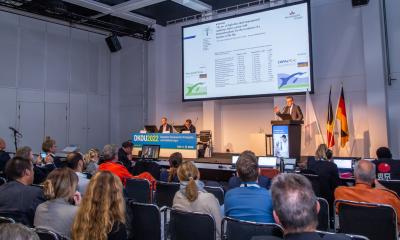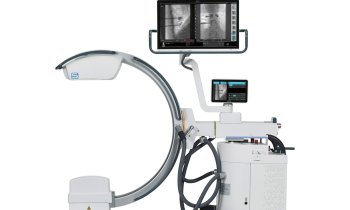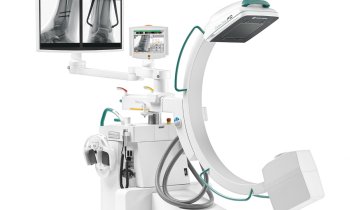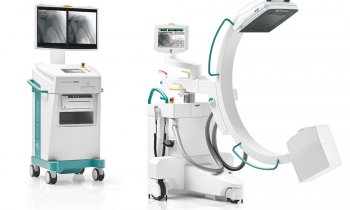Image source: Heraeus
Sponsored • Hip arthroplasty
Endoprostheses for elderly and frail patients: Preparation is half the battle
Article: Wolfgang Behrends
An ageing population and modern lifestyle conditions in developed countries have greatly increased the case numbers for hip arthroplasty. To prevent complications, it is important for orthopaedic surgeons to identify high-risk patients and take proper precautions. At the Heraeus Medical symposium as part of the German Congress of Orthopaedics and Trauma Surgery (DKOU), two experts explored the special measures that should be taken to ensure better outcomes for elderly and frail patients.
Hip osteoarthritis and fractures of the femoral neck are becoming increasingly common and are especially prevalent in persons aged 75 and up, as recent figures show.1 Should these patients receive endoprostheses with or without bone cement? While this question may seem simple enough, the answer is surprisingly complex. ‘Additional information is key for choosing the right treatment,’ emphasized Prof Dieter Christian Wirtz. Basic patient data like age and diagnostic x-ray images should be complemented with detailed clinical information whenever possible, said the expert from the Clinic and Polyclinic for Orthopaedics and Trauma Surgery at Bonn University Hospital.
Bone cement is currently only used in 21.6% of coxarthrosis fracture patients in Germany – a stark contrast to many other countries like the UK or Sweden.1 This is surprising, as cemented endoprostheses generally correspond with a significantly lower probability of implant failure.1 ‘This suggests that cemented shaft treatment brings benefits for patients over 75, especially in women,’ the expert said. Even in octogenarians, cementation of both the femoral stem and the acetabular cup enhances implant survival, a study from Finland shows.2
Recommended article
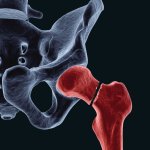
Sponsored • Orthopaedics
The fragile patient in arthroplasty: Sustainably lower risk of infection in hip fractures
Arthroplasty treatment of fragile patients is a major challenge faced by orthopaedic surgeons. The patients, often geriatric, come with a variety of risk factors and comorbidities that can negatively impact the success of an arthroplasty procedure.
The right implant and technique at the right time
Next to the cementation itself, however, there are several other factors that influence outcomes, Wirtz noted. Techniques and implant types should be chosen carefully to reflect the individual patients’ situation. For example, the older the patients, the more they benefit from the reduced trauma of minimally invasive procedures.3 Also, as osteoporosis erodes the bone structure, the danger of dislocation and fracture for highly polished implants (surface Ra <0.1µm) increases.4 In these cases, matte surface stems and cementation offer greater and longer stability.
Furthermore, utmost care is required in the preparation of the bone: In this context, Wirtz highlighted the importance of thorough jet lavage to prevent the dreaded “sudden death” due to fat embolisms from inadequately cleared medullary cavities.5,6
While there is no one-size-fits-all solution, Wirtz concluded that for most elderly patients, a combination of dual-mobility cups and antibiotic-loaded bone cement is the way to go for primary total hip arthroplasty. ‘This significantly reduces periprosthetic fracture and infection rates and increases survival of the implant.’

Image source: Heraeus
In this context, the expert highlighted the importance of frailty in patients. ‘Frail patients are prone to a wide range of complications; even a minor illness can easily lead to complete decompensation. Therefore, this aspect needs to be addressed in any pre-surgical assessment,’ he urged.8 Conditions such as weight loss, exhaustion, weak grip, or slow walking speed should always raise red flags and lead to special precautions for these patients.9 To prepare effectively for high-risk cases, surgeons should not hesitate to team up with geriatricians, as their expertise significantly contributes to lowering mortality after hip fracture.10
That is not to say, of course, that the surgical aspect should be neglected: choosing the right implant goes a long way towards securing long-time stability and with it, quality of life for the patients. Liener cautioned that more is not always better: Recent studies confirm that total hip arthroplasty hardly brings improvements over hemiarthroplasty for hip fracture.11
As his colleague before him, Liener pointed out the benefits of cemented implants, ranging from overall quality-of-life improvements according to the EQ-5D utility score to regaining greater mobility, without increasing complication rates.12 The expert advocated use of third-generation cementation techniques to further reduce incidence of the Bone Cement Implantation Syndrome (BCIS) – a common argument against the use of bone cement.13
The importance of frailty
Following up, Prof Ulrich Liener encouraged his colleagues to see the bigger picture: The Head of the Clinic for Orthopaedics, Trauma Surgery and Sports Traumatology at the Marienhospital in Stuttgart pointed out that complications are not always surgical or implant related. Instead, conditions typically associated with geriatric patients are common – for example, delirium, pneumonia, and heart failure.7 ‘If we want to significantly improve our outcomes, we need to look beyond pure technical issues and also deal with these challenges. I am convinced that we can take a huge step in that direction if we can offer a comprehensive, holistic therapy concept for our patients.’
Recommended article

Sponsored • Orthopaedics
Hip arthroplasty for femoral neck fractures – but without the complications
Arthroplasty for femoral neck fractures has seen enormous progress in recent years, but complications due to infections are still a major problem. With good preparation and the right technique, however, orthopaedic surgeons can take away much of the horror of this scenario.
To minimise infection rates, especially in the aforementioned high-risk age group of 75 and above, the expert recommends dual antibiotic-loaded cement.14,15,16 ‘If the surgeon takes the proper precautions, prepares his patient well and uses up-to-date techniques, the once-dreaded BCIS basically becomes a non-issue,’ Liener summarised.
References:
- Annual report 2022 of the German Arthroplasty Registry (EPRD)
- Jämsen E et al.: High Early Failure Rate After Cementless Hip Replacement in the Octogenarian; Clinical Orthopaedics and Related Research 2014
- Ramadanov N et al.: Risk Factors and Predictors for Functional Outcome and Complication Rate in Total Hip Arthroplasty through Minimally Invasive and Conventional Approaches: A Systematic Review and Meta-Regression Analysis of 41 Randomized Controlled Trials; Journal of Clinical Medicine 2023
- Gravius S et al.: In vitro interface and cement mantle analysis of different femur stem designs; Journal of Biomechanics 2008
- Parvizi J et al.: The Frank Stinchfield Award. Sudden death during primary hip arthroplasty; Clinical Orthopaedics and Related Research 1999
- Rothberg DL et al.: Reducing the risk of bone cement implantation syndrome during femoral arthroplasty; Orthopedics 2013
- Flikweert ER et al.: Complications after hip fracture surgery: are they preventable?; European Journal of Trauma and Emergency Surgery 2018
- Clegg A et al.: Frailty in elderly people; Lancet 2013
- Fried L et al.: Frailty in older adults: evidence for a phenotype; The Journals of Gerontology: Series A 2001
- Rapp K et al.: The Association Between Orthogeriatric Co-Management and Mortality Following Hip Fracture; Deutsches Ärzteblatt International 2020
- HEALTH investigators: Total Hip Arthroplasty or Hemiarthroplasty for Hip Fracture; New England Journal of Medicine 2019
- Fernandez MA et al.: Cemented or Uncemented Hemiarthroplasty for Intracapsular Hip Fracture; New England Journal of Medicine 2022
- Bökeler U et al.: The Influence of a Modified 3rd Generation Cementation Technique and Vaccum Mixing of Bone Cement on the Bone Cement Implantation Syndrome (BCIS) in Geriatric Patients with Cemented Hemiarthroplasty for Femoral Neck Fractures; Medicina 2022
- Sprowson AP et al.: The use of high-dose dual-impregnated antibiotic-laden cement with hemiarthroplasty for the treatment of a fracture of the hip. The Fractured Hip Infection trial; Joint & Bone Journal 2016
- Szymski D et al.: The Prophylactic Effect of Single vs. Dual Antibiotic-Loaded Bone Cement against Periprosthetic Joint Infection Following Hip Arthroplasty for Femoral Neck Fracture: An Analysis of the German Arthroplasty Registry; Antibiotics 2023
- Agni NR et al.: High-dose dual-antibiotic loaded cement for hip hemiarthroplasty in the UK (WHiTE 8): a randomised controlled trial; Lancet 2023
Source: Heraeus
11.03.2024



